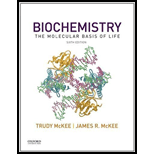
To review:
The path of movement of fatty acids present in a cheeseburger to the fat cells or adipocytes.
Introduction:
Oils and fats are constituted by triacylglycerol (TAG). These molecules are essential for the body as they provide energy, but when the levels of these molecules become high, the body is at a risk of a heart attack. Food rich in fats includes avocados, nuts, butter, red meat, and vegetable oil.
Explanation of Solution
When a person eats a cheeseburger, the mouth mixes the crushed food with the saliva that is termed as the bolus. It then enters the stomach. Digestion of fats does not occur in either of these organs. Instead, fat digestion starts in the small intestines when it receives food from the stomach mixed with the secretions of the pancreas and liver. Bile salts from the liver break the fat to fat droplets. The pancreatic lipases from the pancreas act on the TAGs to break them into fatty acids and glycerol molecules. These molecules are small enough to diffuse in the cells of the intestines. For the fats to be stored, these molecules again have to be converted back to TAG and then be packaged.
The body packages TAG into the core of a protein molecule. This lipoprotein is thus called a chylomicron. The lymphatic capillaries of the intestines called lacteals take up the chylomicrons, which then travel through the veins, enter the heart, the heart pumps it to the lungs, and then they reach the arteries. The arteries drain into capillary beds. These capillary beds are the site of absorption. The chylomicrons of the arteries are broken down by lipase to fatty acid and glycerol. The adipose cells pick these up from the capillaries and get converted to TAGs again for storage. The chylomicrons that are not absorbed are referred to as the chylomicron remnants and are taken up by the liver.
Thus, it can be concluded that digestion of fats starts in the small intestines, where they are broken down into fatty acids and glycerol that are then absorbed by the lymphatic system. To store the fats, these molecules are converted to TAG again and then stored in the cytoplasm of the adipose cells.
Want to see more full solutions like this?
Chapter 12 Solutions
Biochemistry, The Molecular Basis of Life, 6th Edition
- You’ve isolated a protein and determined that the Native molecular weight of the holoenzyme is 160 kD using size exclusion chromatography. Analysis of this protein using SDS-PAGE revealed 2 bands, one at 100 kD and one at 30 kD. The enzyme was found to be 0.829% NAD (by weight). What further can be said regarding the structure of the polypeptide?arrow_forwardWhat is the formation of glycosylated hemoglobin (the basis for the HbA1c test)? Can you describe it?arrow_forwardPlease analze the gel electrophoresis column of the VRK1 kinase (MW: 39.71 kDa). Also use a ruler to measure the length of the column in centimeters and calculate the MW of each band observed. Lane 1: buffer Lane 2 : Ladder Lane 3: Lysate Lane 4: Flowthrough Lane 5: Wash Lanes 6-8: E1, E2, E3 Lane 9: Dialyzed VRK1 Lane 10: LDHarrow_forward
- Do sensory neurons express ACE2 or only neurolipin-1 receptors for COVID19 virus particle binding?arrow_forwardExplain the process of CNS infiltration of COVID19 through sensory neurons from beginning to end, including processes like endocytosis, the different receptors/proteins that are involved, how they are transported and released, etc.,arrow_forwardH2C CH2 HC-COOO CH2 ܘHO-C-13c-O isocitrate C-S-COA H213c CH2 C-OO 13C-S-COA CH2 C-00 the label will not be present in succinyl CoA C-S-COA succinyl-CoAarrow_forward
- A culture of kidneys cells contains all intermediates of the citric acid cycle. It is treated with an irreversible inhibitor of malate dehydrogenase, and then infused withglucose. Fill in the following list to account for the number of energy molecules that are formed from that one molecule of glucose in this situation. (NTP = nucleotidetriphosphate, e.g., ATP or GTP)Net number of NTP:Net number of NADH:Net number of FADH2:arrow_forward16. Which one of the compounds below is the final product of the reaction sequence shown here? OH A B NaOH Zn/Hg aldol condensation heat aq. HCI acetone C 0 D Earrow_forward2. Which one of the following alkenes undergoes the least exothermic hydrogenation upon treatment with H₂/Pd? A B C D Earrow_forward
- 6. What is the IUPAC name of the following compound? A) (Z)-3,5,6-trimethyl-3,5-heptadiene B) (E)-2,3,5-trimethyl-1,4-heptadiene C) (E)-5-ethyl-2,3-dimethyl-1,5-hexadiene D) (Z)-5-ethyl-2,3-dimethyl-1,5-hexadiene E) (Z)-2,3,5-trimethyl-1,4-heptadienearrow_forwardConsider the reaction shown. CH2OH Ex. CH2 -OH CH2- Dihydroxyacetone phosphate glyceraldehyde 3-phosphate The standard free-energy change (AG) for this reaction is 7.53 kJ mol-¹. Calculate the free-energy change (AG) for this reaction at 298 K when [dihydroxyacetone phosphate] = 0.100 M and [glyceraldehyde 3-phosphate] = 0.00300 M. AG= kJ mol-1arrow_forwardIf the pH of gastric juice is 1.6, what is the amount of energy (AG) required for the transport of hydrogen ions from a cell (internal pH of 7.4) into the stomach lumen? Assume that the membrane potential across this membrane is -70.0 mV and the temperature is 37 °C. AG= kJ mol-1arrow_forward
 Biology Today and Tomorrow without Physiology (Mi...BiologyISBN:9781305117396Author:Cecie Starr, Christine Evers, Lisa StarrPublisher:Cengage Learning
Biology Today and Tomorrow without Physiology (Mi...BiologyISBN:9781305117396Author:Cecie Starr, Christine Evers, Lisa StarrPublisher:Cengage Learning Biology (MindTap Course List)BiologyISBN:9781337392938Author:Eldra Solomon, Charles Martin, Diana W. Martin, Linda R. BergPublisher:Cengage Learning
Biology (MindTap Course List)BiologyISBN:9781337392938Author:Eldra Solomon, Charles Martin, Diana W. Martin, Linda R. BergPublisher:Cengage Learning Human Physiology: From Cells to Systems (MindTap ...BiologyISBN:9781285866932Author:Lauralee SherwoodPublisher:Cengage Learning
Human Physiology: From Cells to Systems (MindTap ...BiologyISBN:9781285866932Author:Lauralee SherwoodPublisher:Cengage Learning





